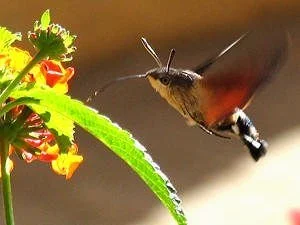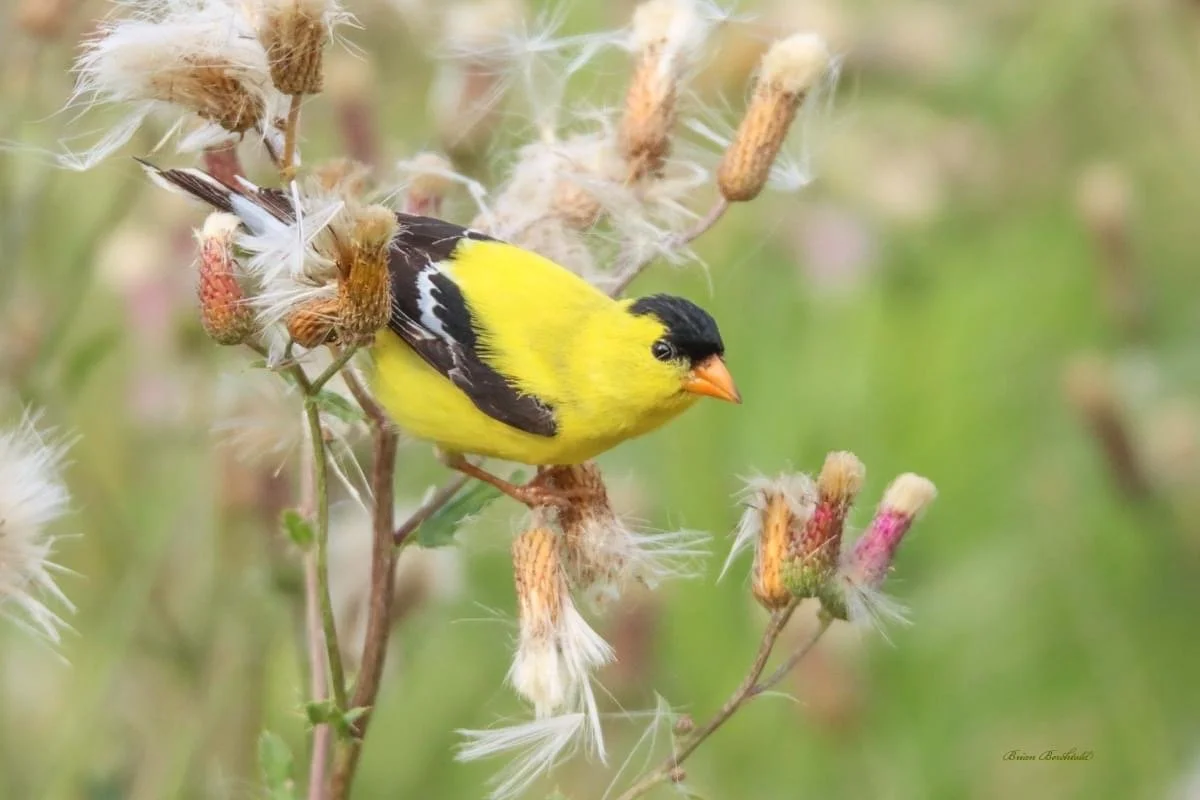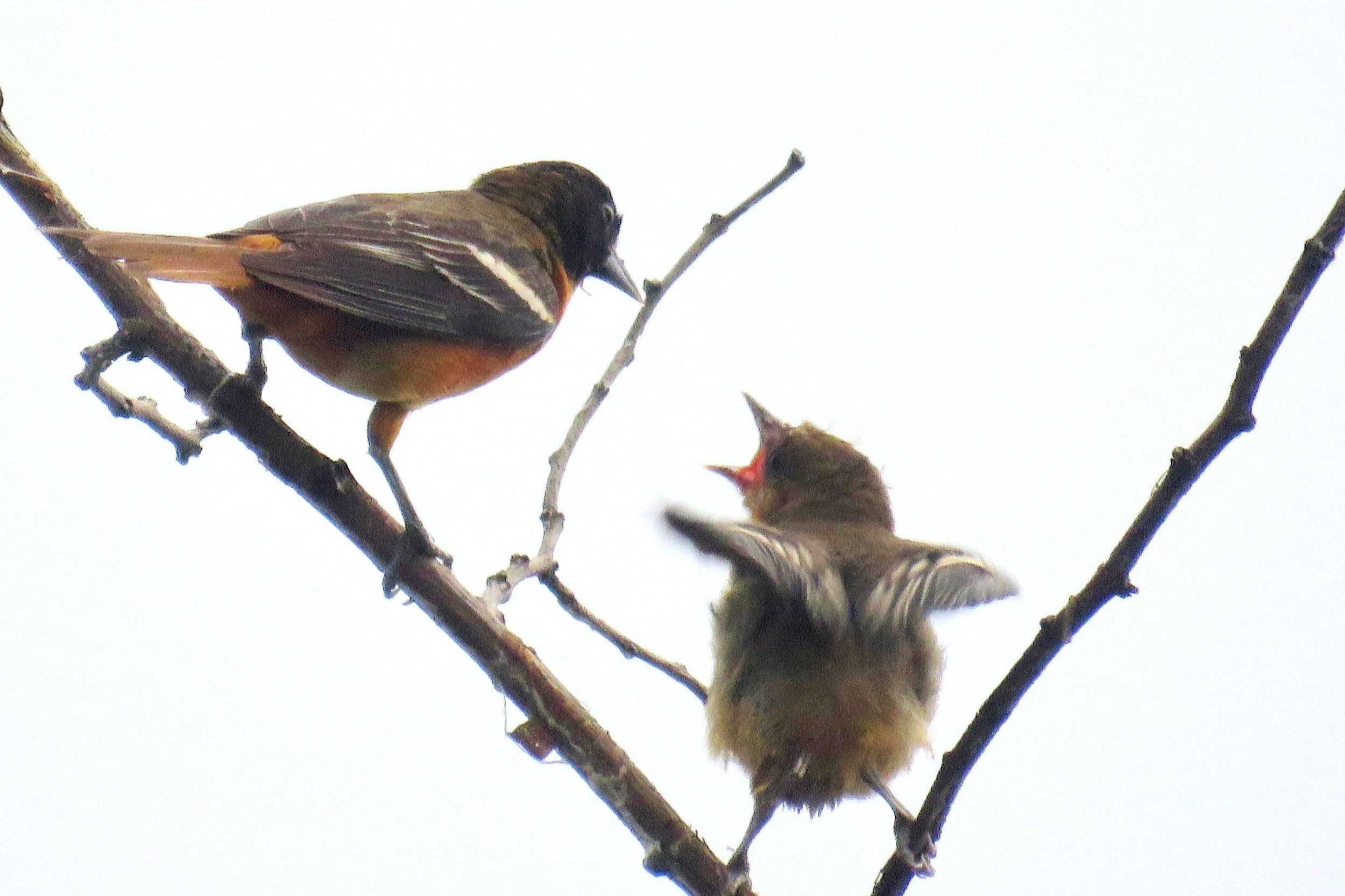July NATURE NOTES
By Katie Andersen
Which birds can we expect and what else is happening in nature this month?
Read on to find out more!
Hummingbird Moths, often mistaken for “baby hummingbirds", show up at plants.
Highbush Cranberry, Red Raspberries, and Viburnum start producing fruit.
Native thistle plants begin to seed; American Goldfinches gather thistledown for nesting material by late July.
The first brood of immature Ruby-throated Hummingbirds begin to show up at nectar feeders early in the month. They will look similar to adult female hummingbirds and may even be a little plumper than the adults.
Fledging continues for many songbird species this month. Watch for young birds following their parents around in your yard.
Annual Cicadas and Katydids start calling early in the month.
More than 25 species of butterflies can be seen in our area during this month. Increase the butterflies seen in your yard by planting a butterfly garden, including plants that caterpillars will eat, and by reducing the amount of pesticides you use in your lawn.
Mallards and Wood Ducks molt into "eclipse" plumage and are unable to fly for several weeks.
Many birds stop singing now that young have fledged. Common continuing songsters during this month include Red-eyed Vireo and Eastern Wood-Pewee.
Southbound migration starts this month with returning shorebirds.
Listen at night for the feeding screeches of young Barred and Great Horned Owls as they continue to follow their parents for food while learning to hunt.
Fireflies continue to appear in our yards. Learn how to identify and document your firefly sightings in the Firefly Atlas!
July 2024 Dates Of Note:
New Moon - July 5; Full Moon - July 21
July 30: Delta Aquarids Meteor shower peaks.












